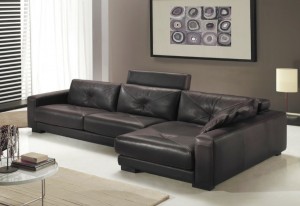 So you have just spent the night out at an art gallery and realized that hanging some artwork would be the perfect thing for your interior decorating. You’ve been thinking this for a while now, but it wasn’t until you were walking around a gallery, looking at all of the individual pieces, that it dawned on you. You’ve had a couple photographs or paintings that you’ve wanted to hang and the evening out has just made you determined to make a gallery out of your living space.
So you have just spent the night out at an art gallery and realized that hanging some artwork would be the perfect thing for your interior decorating. You’ve been thinking this for a while now, but it wasn’t until you were walking around a gallery, looking at all of the individual pieces, that it dawned on you. You’ve had a couple photographs or paintings that you’ve wanted to hang and the evening out has just made you determined to make a gallery out of your living space.
It’s important to consider the type of frame that your artwork is going to be in before adding it to your room. You want to make sure that everything you put into your home, has a function and isn’t taking away from any of the design work you have done already
Hanging artwork can be difficult. There many considerations to take when putting artwork up on a wall. The size, shape, architecture, configuration of your house, the color of the walls, the lighting, the size of the artwork, the hardware, and of course the colors, materials, subject and meaning of the artwork matter. No one thing is of more or less importance than the other.
The placement of art on a wall presents an opportunity for a dialogue that enhances, rather than merely showcases, the work. It is an experience controlled by the person hanging the artwork. You control what the viewer sees first, what they see last, what they see across the room at any given time and what they see in their periphery while looking at one piece of work. Subject matter, color, and other visual cues can draw one’s eye from one piece to the next, subliminally helping the viewer make connections in their mind. When hanging your artwork, consider complementing your artwork with an adjacent mirror, since it will enhance the artworks presence in your room.
A general rule of thumb for hanging work on a wall is that the exact center of the piece lies five feet from the floor, the same rule applies for when it hangs above furniture. You also want to consider the size of the furniture you may be hanging your artwork over. You don’t want the piece to be larger than any furniture it is above, artwork should always be smaller than the furniture it is above, but not too small.
Light should hit the piece just right. You are, after all, showcasing the work. This doesn’t mean work cannot be hung higher or lower, at an angle, salon-style, in a grid or pattern, or abutting several other pieces. The choice is yours to make.
Careless presentation can take away from the art. It can be confusing and detrimental. But, for instance, purposefully engaging the viewer in a visual and physical challenge can be a clever twist to presenting work. The installation techniques of your artwork should neither outshine nor undermine the art, it should simply make sense.
Artwork is hung on a wall because it has a purpose there. It is different than flipping through reproductions of the work in a book, on a screen, or on a table. The same photograph can look completely different on a wall than it does on a computer screen. Each method presents the artwork in a different way, and this is the most important part of hanging art. This should be the case in not just museums and galleries, but in boutiques, coffee shops, office buildings and your own house. It involves a lot of thought, precision, and…math. You want to make sure that people see that you enjoy the artwork you are putting up in your house because it says something about your interests in artwork and creative interior design.